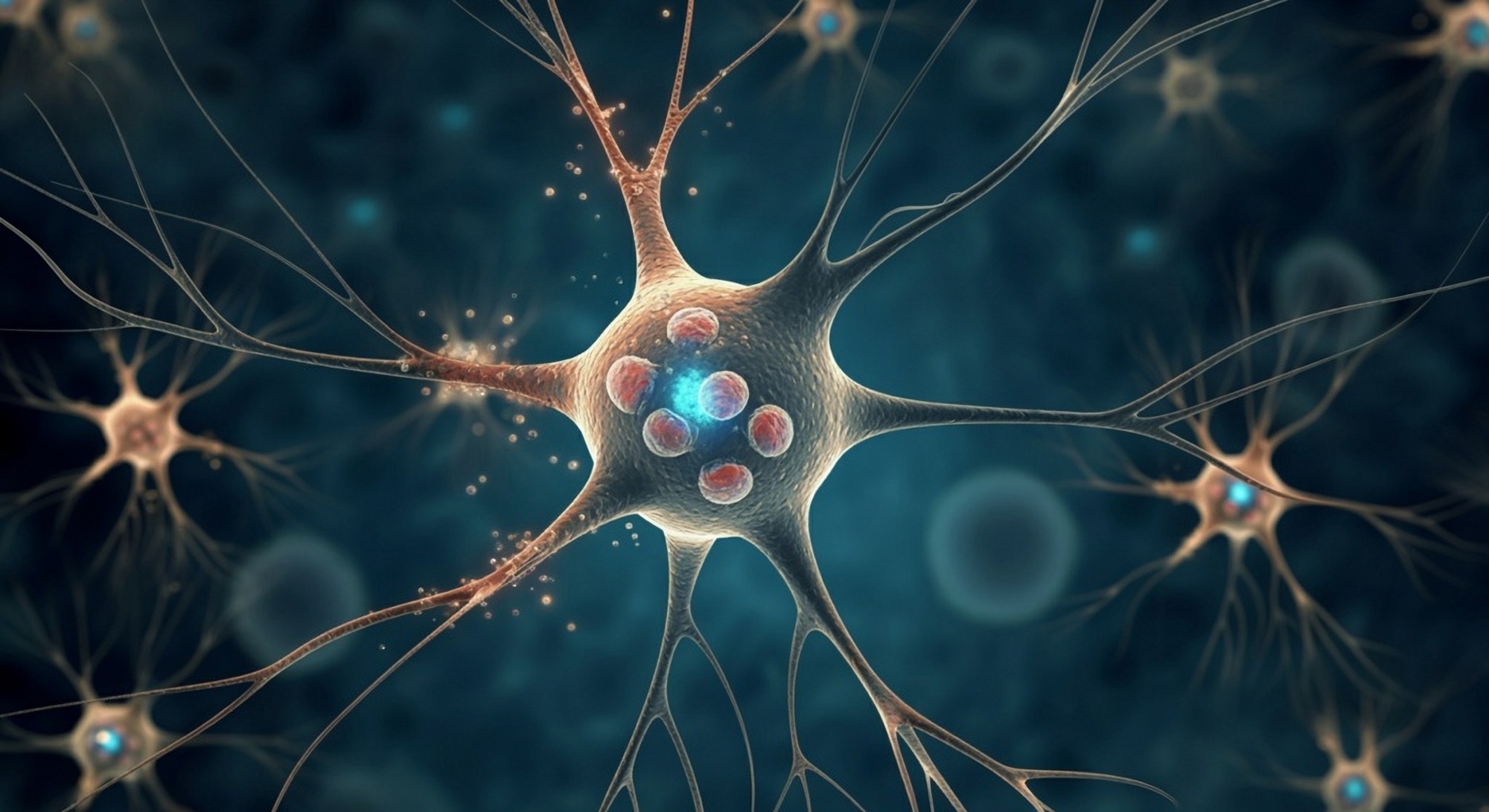Uncovering the metabolic roots of Huntington’s disease, this study reveals how early dopamine imbalances linked to GSTO2 may open new doors to preventive therapies for neurodegeneration.
Study: Impaired striatal glutathione–ascorbate metabolism induces transient dopamine increase and motor dysfunction. Image Credit: Shutterstock AI / Shutterstock.com
In a recent study published in the journal Nature Metabolism, researchers explore the early mechanisms of Huntington’s disease by investigating the role of metabolic signaling in indirect spiny projection neurons (iSPNs), which may trigger elevated dopamine levels linked to Huntington’s disease symptoms. Using mice, the researchers identify glutathione S-transferase omega-2 (GSTO2) as a crucial enzyme that controls dopamine, potentially providing targets for preventive Huntington’s disease therapies.
What causes Parkinson’s disease?
Dopamine signaling in the striatum of the brain plays a major role in controlling voluntary movement, learning, and cognition. This process is partly driven by neurons in the midbrain.
Dopamine imbalance leads to cognitive and motor dysfunction in Huntington’s disease. Studies using animal models with mutations in the huntingtin (HTT) gene have shown that dopamine dysfunction begins before neurodegeneration occurs. Among the neurons in the brain, iSPNs are particularly affected in Huntington’s disease and may contribute to dopamine imbalances and motor problems.
Although research suggests that impaired brain-derived neurotrophic factor (BDNF)-tropomyosin receptor kinase B (TrkB) signaling contributes to Huntington’s disease, deciphering its exact role has been challenging. Understanding how altered BDNF-TrkB signaling, particularly in iSPNs, might lead to early dopamine dysfunction in Huntington’s disease could provide targets for potential preventative therapy.
About the study
In the current study, researchers investigate how alterations in TrkB signaling in iSPNs and changes in the metabolism of glutathione could impact dopamine levels, progressive neuronal degeneration, and the onset of motor dysfunction in Huntington’s disease.
Histological analyses and immunostaining were performed on brain tissue samples obtained from genetically modified mice. The striatum and substantia nigra (SNc)-ventral tegmental area (VTA) regions were used for the stereological analysis, with specific cell markers such as tyrosine hydroxylase (TH), neuropeptide Y (NPY), and somatostatin (SST) quantified in these regions.
High-performance liquid chromatography (HPLC) was used to measure dopamine, metabolites of dopamine such as 3,4-dihydroxyphenylacetic acid (DOPAC) and homovanillic acid (HVA), ascorbic acid, and dehydroascorbic acid in the striatal tissue. An enzymatic assay was also performed to quantify total and oxidized glutathione levels from homogenized tissue.
High-resolution respirometry was executed to analyze mitochondrial oxygen consumption in the tissue homogenates. This protocol specifically assessed mitochondrial respiration linked to the substrates from both enzyme complexes I and II to monitor mitochondrial integrity.
Single-molecule fluorescent in situ hybridization (smFISH) analysis determined whether upregulation of the gene coding for GSTO2 led to increased dopamine levels. This experiment utilized fluorescent probes that targeted Gsto2 messenger ribonucleic acid (mRNA). Bulk RNA sequencing of purified iSPNs in the pre-symptomatic stage was conducted as part of a transcriptomic analysis to identify deregulated metabolic pathways.
A lentiviral vector carrying short hairpin RNA (shRNA) to silence the Gsto2 gene was injected intracranially into mice. Immunohistochemistry was subsequently performed to assess transduction efficiency and Gsto2 expression.
Study findings
BDNF-TrkB signaling plays a critical role in regulating cellular metabolism pathways, including glutathione-ascorbate and energy metabolism. Specifically, the deletion of TrkB in iSPNs elevated the expression of Gsto2, thereby leading to increased dopamine levels through alterations of ascorbic acid homeostasis and disruption of energy metabolism in the neurons.
This metabolic imbalance was linked to progressive motor dysfunction. Moreover, reducing Gsto2 in vivo restored the dopamine balance and energy metabolism and prevented motor dysfunction. Thus, the GSTO2 enzyme impacts dopamine regulation through its role in glutathione metabolism.
The transcriptomic analysis indicated that the upregulation of Gsto2 in iSPNs affected redox homeostasis and created a hyperdopaminergic state similar to pre-symptomatic Huntington’s disease. This hyperdopaminergic state, followed by a subsequent reduction in dopamine, was observed in Huntington’s disease models, thus supporting the potential role of Gsto2 in early disease development.
Conclusions
The study findings highlight the role of BDNF-TrkB signaling in cellular metabolism and dopamine regulation. GSTO2 and glutathione-ascorbate pathways also appear to be involved in the neurodegenerative vulnerability observed in Huntington’s disease and similar disorders. In the future, additional research is needed to explore pre-symptomatic changes in these metabolic pathways in other neurodegenerative disease models.
Journal reference:
- Malik, M. Y., Guo, F., AsifMalik, A., et al. (2024). Impaired striatal glutathione–ascorbate metabolism induces transient dopamine increase and motor dysfunction. Nature Metabolism. doi:10.1038/s4225502401155z.
Source link : News-Medica

